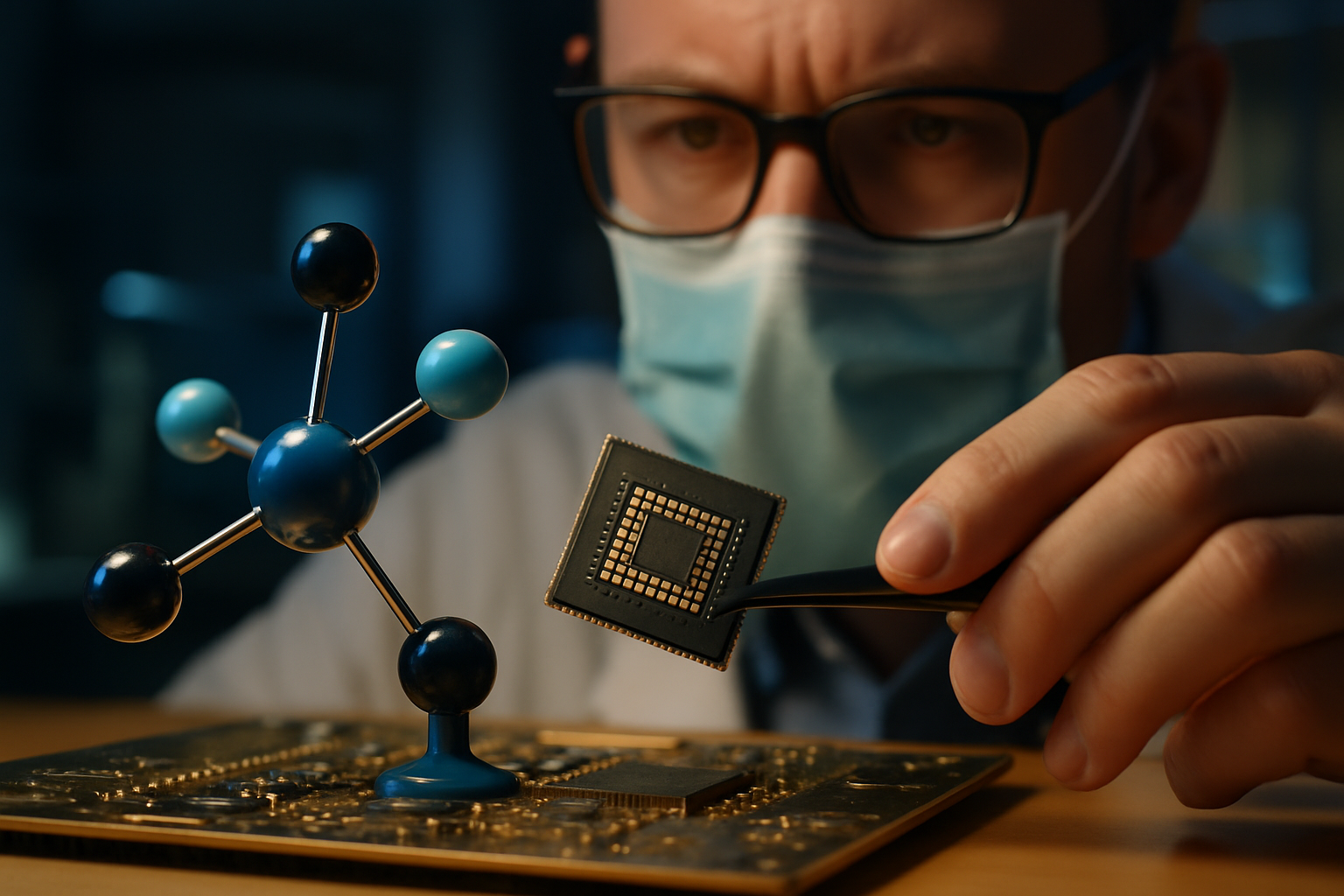Molecular Electronics: The Frontier of Nanoscale Circuits
In the realm of cutting-edge technology, a revolution is quietly unfolding at the molecular level. Molecular electronics, a field that merges chemistry and electronics, promises to redefine the limits of computing power and efficiency. As we push against the boundaries of traditional silicon-based electronics, scientists and engineers are turning to individual molecules as the building blocks for next-generation circuits. This paradigm shift could lead to devices that are not just smaller and faster, but also more energy-efficient and capable of feats current technology can only dream of.

From Concept to Reality: The Journey of Molecular Electronics
The idea of molecular electronics isn’t new – it dates back to the 1970s when researchers first proposed using organic molecules for electronic functions. However, it’s only in recent years that advancements in nanotechnology and microscopy have made it possible to manipulate and measure electrical properties at the molecular scale.
Overcoming Silicon’s Limitations
As Moore’s Law approaches its physical limits, the semiconductor industry is scrambling for alternatives. Silicon transistors are approaching sizes where quantum tunneling and other effects make them unreliable. Molecular electronics offers a way to sidestep these issues by embracing the quantum world rather than fighting against it.
The Building Blocks of Molecular Circuits
Researchers are exploring a variety of molecules for use in electronic circuits. Organic molecules like benzene rings and carbon nanotubes are popular choices due to their electrical properties and potential for customization. Some teams are even investigating DNA as a scaffold for molecular circuits, leveraging its self-assembly properties.
Challenges on the Nano Frontier
Despite its promise, molecular electronics faces significant hurdles. Connecting molecular-scale components to the macroscopic world remains a major challenge. Additionally, the behavior of electrons at this scale can be unpredictable, making circuit design a complex task. Researchers are also grappling with issues of stability and reproducibility – crucial factors for any commercial application.
Beyond Traditional Computing
The potential of molecular electronics extends far beyond simply shrinking our current technology. By harnessing quantum effects, molecular circuits could enable new forms of computing that are fundamentally different from classical binary systems. This could lead to breakthroughs in fields like cryptography, drug discovery, and complex system simulation.
The Race for Molecular Memory
One of the most promising near-term applications of molecular electronics is in data storage. Several companies and research institutions are working on molecular memory devices that could store data at densities far beyond what’s possible with current technology. These devices could potentially store entire libraries of information in a space smaller than a grain of sand.
Bridging Biology and Technology
Molecular electronics sits at the intersection of biology and technology, opening up intriguing possibilities for bio-inspired computing and interfaces between electronic systems and living organisms. This could lead to advancements in areas like neural interfaces and biomedical sensors.
The Road to Commercialization
While much of molecular electronics remains in the realm of basic research, some applications are inching closer to commercial viability. Several startups and established tech companies are investing in the field, recognizing its potential to disrupt multiple industries.
Environmental Implications
As we consider the future of electronics, the environmental impact of our devices becomes increasingly important. Molecular electronics could potentially lead to more energy-efficient and environmentally friendly technologies, reducing the tech industry’s carbon footprint.
A Glimpse into the Future
The full realization of molecular electronics may still be years away, but its potential to revolutionize technology is undeniable. As research progresses, we may see hybrid systems that combine molecular components with traditional electronics, gradually paving the way for fully molecular devices.
In conclusion, molecular electronics represents a bold step into the future of technology. By harnessing the power of individual molecules, we stand on the brink of a new era in computing and electronics. While challenges remain, the progress in this field is relentless, driven by the promise of devices that are smaller, faster, and more capable than anything we’ve seen before. As we continue to push the boundaries of what’s possible at the nanoscale, molecular electronics may well be the key to unlocking the next great leap in technological innovation.





